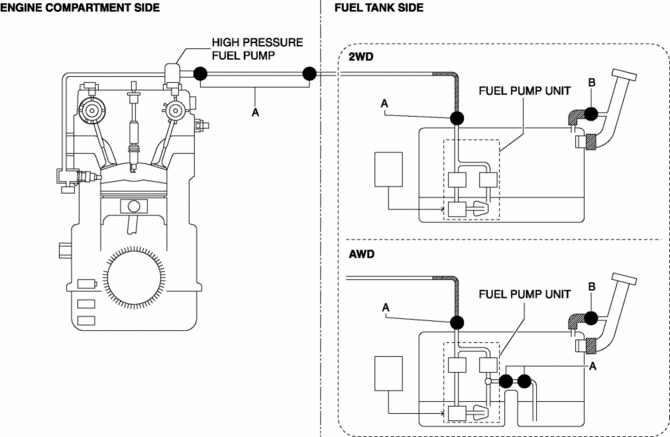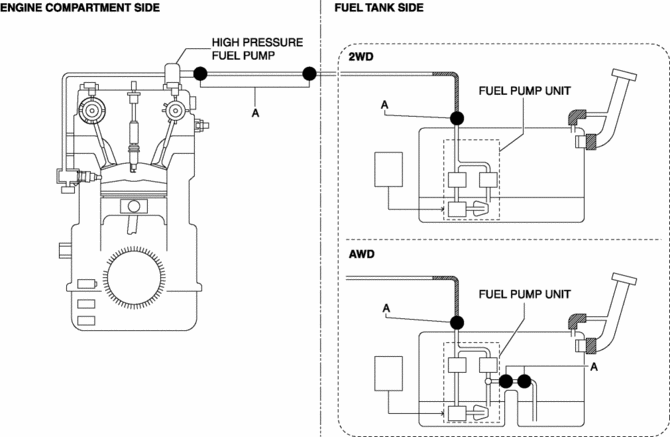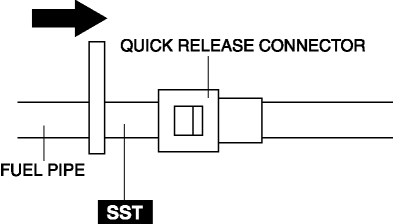Mazda CX-5 Service & Repair Manual: Quick Release (Fuel System) Connector
Purpose, Function
-
Serviceability has been improved by the easy disconnection/connection.
Construction
-
The following types of the quick release connectors are used.
U.S.A. and CANADA

Except U.S.A. and CANADA

Type A
-
An SST is not used with this type.
-
Mainly consists of a retainer and O-ring. The quick release connector is integrated with the fuel hose and therefore cannot be disassembled.
-
When the quick release connector is connected, the fuel pipe projection is locked at the clamp lock point. To release the quick connector lock for each type, follow the procedure in the order shown in each figure.

Type B
-
An SST is used with this type.

-
Consists of a retainer and O-ring. The quick release connector is integrated with the fuel hose and therefore cannot be disassembled.
-
To connect the quick release connector properly, push it into the fuel pipe until a click sound is heard.
-
New quick release connectors are fitted with a checker tab that prevent improper installation. This checker tab cannot normally be removed. When the quick release connector is properly connected to the fuel pipe, the lock is released and the checker tab comes off. Due to this, it can be verified that the quick release connector is completely connected.
 No.28 Fuel Filling Shut Off Concerns
No.28 Fuel Filling Shut Off Concerns
28
FUEL FILLING SHUT OFF CONCERNS
DESCRIPTION
Fuel does not shut off properly.
POSSIBLE CAUSE
...
 Quick Release Connector Removal/Installation
Quick Release Connector Removal/Installation
WARNING:
Fuel is very flammable liquid. If fuel spills or leaks from the pressurized
fuel system, it will cause serious injury or death and facility breakage. Fuel
can also irritate skin ...
Other materials:
Neutral Switch
Purpose/Function
Detects the neutral position of the shift lever.
Construction
Installed to the manual transaxle.
An ON/OFF type switch has been adopted.
Operation
Inputs the neutral switch on/off signal to the PCM.
The contact point is on ...
A/C Cut Off Control [Skyactiv G 2.0]
Outline
Controls the A/C operation by switching the A/C relay ON/OFF at the optimal
timing according to engine operation conditions. Acceleration performance and
A/C compressor reliability have been improved by controlling the A/C operation.
Block Diagram
Operation
The ...
Rear Seat Cushion Trim Removal/Installation
CAUTION:
When removing or putting in the rear seat cushion, contact with the surrounding
areas of the vehicle could cause scratches and damage. When removing or putting
in the rear seat cushion, always use two or more persons to perform the work
and be careful not to scratch or dama ...
